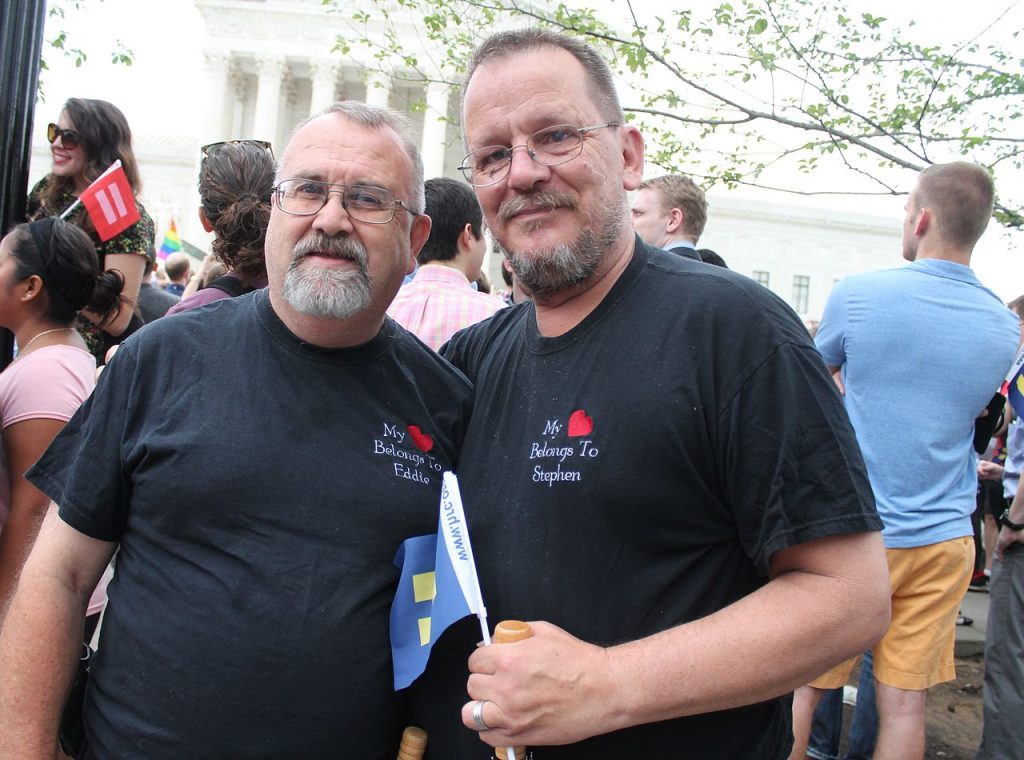165 Gay and Lesbian Elders
Martha Lally; Suzanne Valentine-French; and Dinesh Ramoo
Approximately 3 million older adults in the United States identify as lesbian or gay (Hillman and Hinrichsen, 2014). By 2025 that number is expected to rise to more than 7 million (National Gay and Lesbian Task Force, 2006). Despite the increase in numbers, older lesbian and gay adults are one of the least researched demographic groups, and the research there is portrays a population faced with discrimination. According to the Centers for Disease Control and Prevention (2011), compared to heterosexuals, lesbian and gay adults experience both physical and mental health differences. More than 40 percent of lesbian and gay adults ages fifty and over suffer from at least one chronic illness or disability, and compared to heterosexuals they are more likely to smoke and binge drink (Hillman and Hinrichsen, 2014). Additionally, gay older adults have an increased risk of prostate cancer (Blank, 2005) and infection from HIV and other sexually transmitted illnesses (Centers for Disease Control and Prevention, 2008). When compared to heterosexuals, lesbian and gay elders have less support from others as they are twice as likely to live alone and four times less likely to have adult children (Hillman and Hinrichsen, 2014).
Lesbian and gay older adults who belong to ethnic and cultural minorities, conservative religions, and rural communities may face additional stressors. Ageism, heterocentrism, sexism, and racism can combine cumulatively and impact the older adult beyond the negative impact of each individual form of discrimination (Hillman and Hinrichsen, 2014). David and Knight (2008) found that older gay Black men reported higher rates of racism than younger gay Black men and higher levels of perceived ageism than older gay white men.

Although lesbian and gay older adults face many challenges, more than 80 percent indicate that they engage in some form of wellness or spiritual activity (Fredrickson-Goldsen et al., 2011). They also gather social support from friends and “family members by choice” rather than legal or biological relatives (Hillman and Hinrichsen, 2014). This broader social network provides extra support to gay and lesbian elders.
An important consideration when reviewing the development of gay and lesbian older adults is the cohort in which they grew up (Hillman and Hinrichsen, 2014). The oldest lesbian and gay adults came of age in the 1950s when there were no laws to protect them from victimization. The Baby Boomers, who grew up in the 1960s and 1970s, began to see states repeal laws that criminalized homosexual behaviour. Future lesbian and gay elders will have different experiences due to the legal right for same-sex marriage and greater societal acceptance. Consequently, just like all those in late adulthood, understanding that gay and lesbian elders are a heterogeneous population is important when understanding their overall development.
Media Attributions
- Figure 9 41 © Elvert Barnes is licensed under a CC BY-SA (Attribution ShareAlike) license

